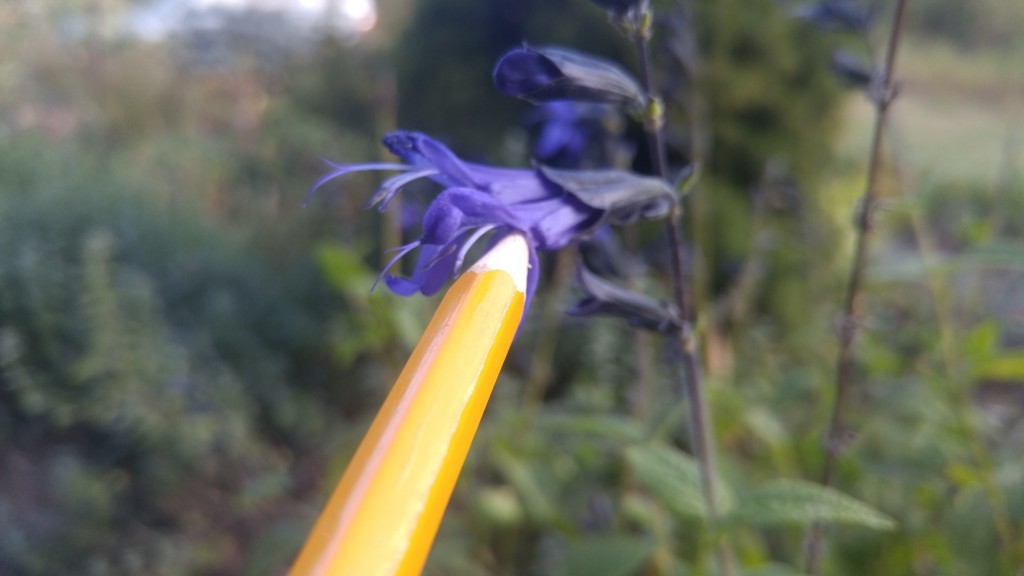You can find some really amazing things in the garden if you know where to look. For example, look closely at a salvia flower and you will see something unique.
Like most flowers, salvia produces nectar to lure pollinators such as wild bees, honeybees and others. And as usual the pollinators end up carrying pollen it picked up from the first flower to the next flower it visits thereby pollinating the second flower and others after that. Usually nectar collection is pretty straight forward, the bee simply visits the flower and sucks out the nectar and moves on to the next flower.
In the case of salvia however, something marvelous happens. The flower has a tiny structure that blocks access to the nectar. Instead if simply inserting its tongue and sucking out the nectar, the pollinator has to physically push itself deeper into the flower past the blockage in order to get to the nectar. That tiny gate that is hindering the bee is connected to the flower’s stamens by way of a pivot point like a see-saw. At the other end of the see-saw are a pair of stamens. At the very end of each stamens is a pollen sac.
When the pollinator pushes against the blocking structure, it causes the stamens to pivot downward. As the stamen moves down and touches the pollinator’s back, pollen is released from the pollen sacs onto the insect. The pollen sticks to that spot on the insect and once it is done gathering nectar, it moves on to other salvia flowers carrying the pollen with it.
All salvias have this astonishing mechanism in their flowers. Different species of salvia have slightly different lengths,sizes and shape of stamens. Some scientists believe that the different lengths of stamen by species minimizes hybridization ie. the pollination of two different species with one another. One type of salvia may deposit its pollen toward the rear of the insect while another may deposit at the front thereby reducing the mixing of pollen.
We’re nearing the end of the growing season but there are still some salvias blooming.
Bob
